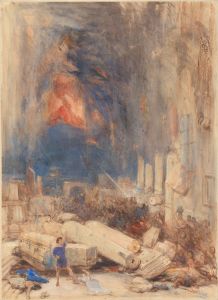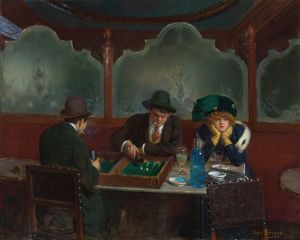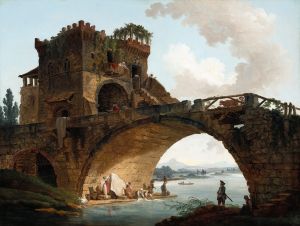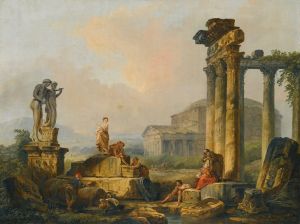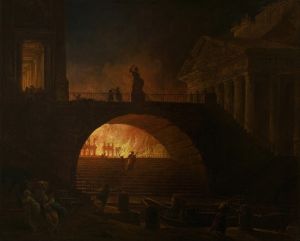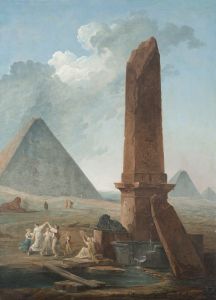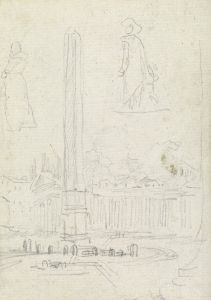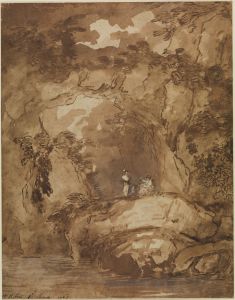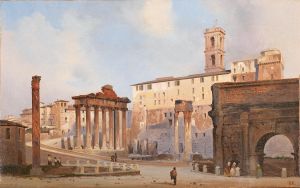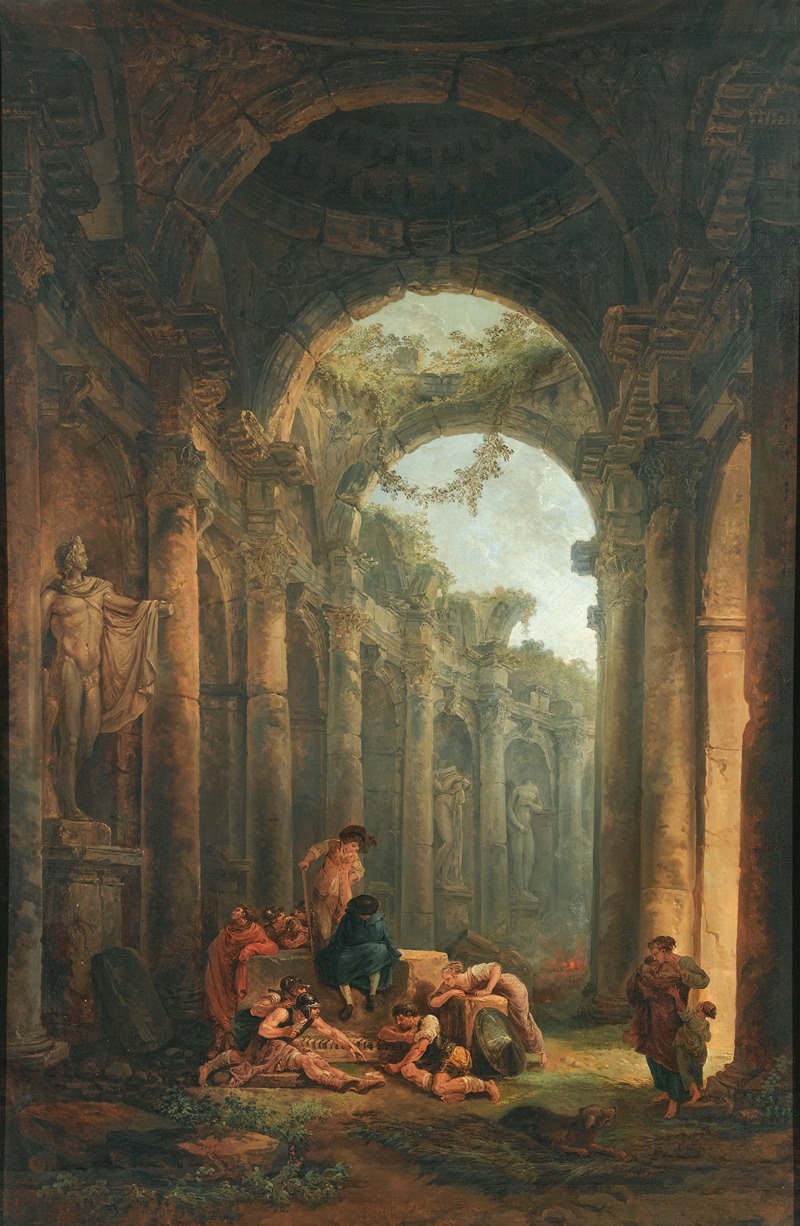
Classical Ruins With Soldiers Gambling
A hand-painted replica of Hubert Robert’s masterpiece Classical Ruins With Soldiers Gambling, meticulously crafted by professional artists to capture the true essence of the original. Each piece is created with museum-quality canvas and rare mineral pigments, carefully painted by experienced artists with delicate brushstrokes and rich, layered colors to perfectly recreate the texture of the original artwork. Unlike machine-printed reproductions, this hand-painted version brings the painting to life, infused with the artist’s emotions and skill in every stroke. Whether for personal collection or home decoration, it instantly elevates the artistic atmosphere of any space.
"Classical Ruins With Soldiers Gambling" is a painting by the French artist Hubert Robert, known for his evocative depictions of architectural ruins and landscapes. Hubert Robert, born in 1733 and deceased in 1808, was a prominent figure in the 18th-century art scene, particularly recognized for his ability to blend real and imagined architectural elements into his works, creating a sense of timelessness and romantic decay.
This particular painting, "Classical Ruins With Soldiers Gambling," exemplifies Robert's fascination with the grandeur and mystery of ancient ruins. The artwork captures a scene where soldiers are engaged in a game of chance amidst the backdrop of classical ruins. The ruins themselves are depicted with a high level of detail, showcasing Robert's skill in rendering architectural elements. Columns, arches, and fragments of ancient structures are portrayed in a state of picturesque decay, which was a popular theme during the period, reflecting the Enlightenment's interest in antiquity and the passage of time.
The soldiers in the painting are depicted in a relaxed manner, absorbed in their game, which adds a human element to the otherwise grand and imposing setting. This juxtaposition of human activity against the backdrop of ancient ruins is a recurring motif in Robert's work, highlighting the transient nature of human endeavors compared to the enduring presence of architectural monuments.
Hubert Robert's work was heavily influenced by his time in Italy, where he studied from 1754 to 1765. During his stay, he was inspired by the ruins of Rome and the surrounding countryside, which became a central theme in his art. His ability to capture the essence of these ancient structures earned him the nickname "Robert des Ruines" or "Robert of the Ruins."
The painting reflects the 18th-century European fascination with the classical past, a period when the rediscovery of ancient sites fueled a renewed interest in classical art and architecture. This cultural movement, known as Neoclassicism, sought to revive the ideals of ancient Greece and Rome, and Robert's work is often associated with this trend, although his romanticized interpretation of ruins also aligns with the emerging Romantic movement.
"Classical Ruins With Soldiers Gambling" is a testament to Robert's mastery in creating atmospheric compositions that evoke a sense of nostalgia and contemplation. His paintings often invite viewers to reflect on the passage of time and the impermanence of human achievements, themes that resonate with audiences even today.
Hubert Robert's contributions to art were recognized during his lifetime, and he held prestigious positions, including as a member of the Royal Academy of Painting and Sculpture in France. His works are housed in major museums around the world, including the Louvre in Paris, which holds an extensive collection of his paintings and drawings.
In summary, "Classical Ruins With Soldiers Gambling" is a quintessential example of Hubert Robert's artistic vision, combining elements of classical architecture with human narratives to create a compelling and thought-provoking scene.







